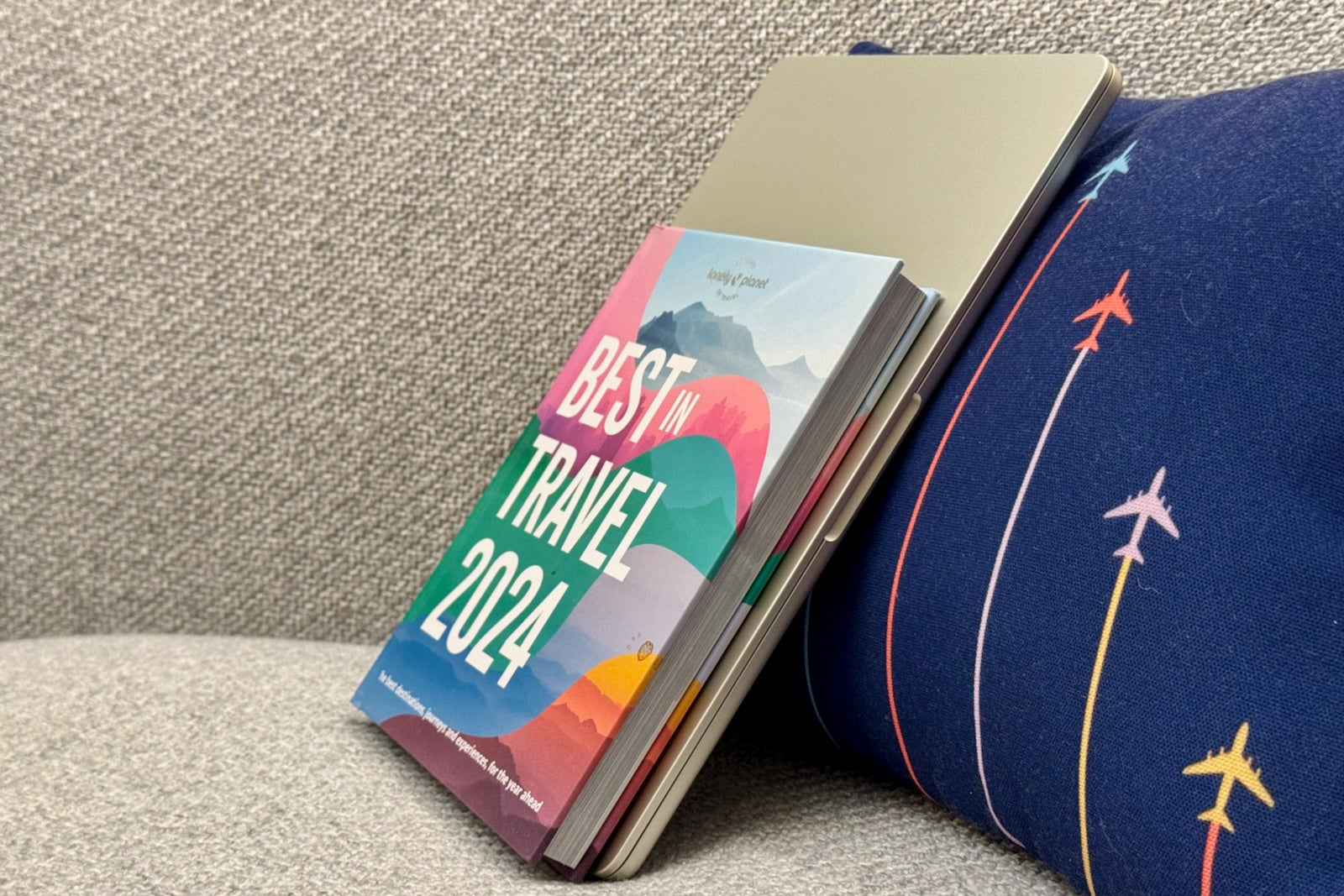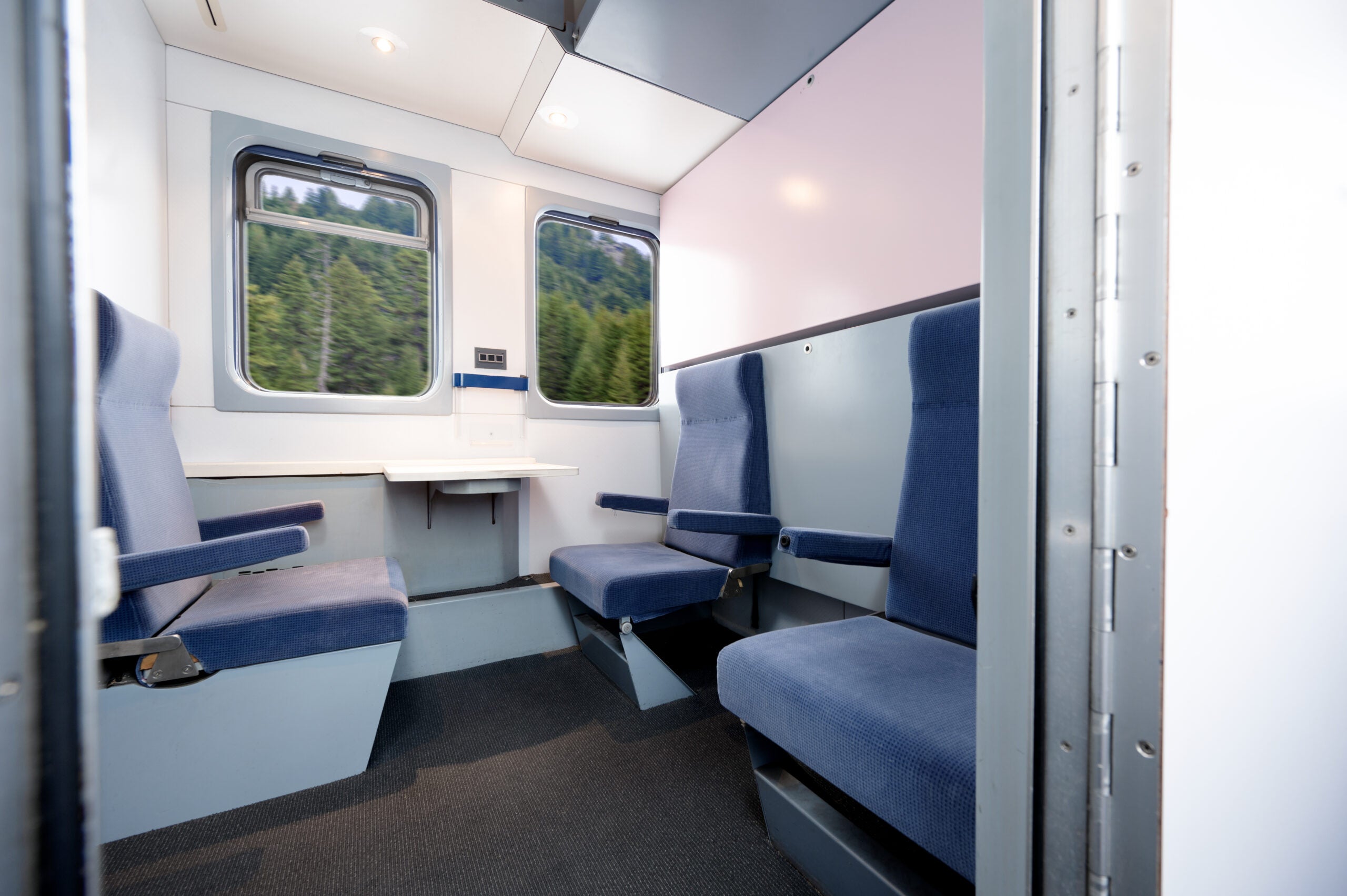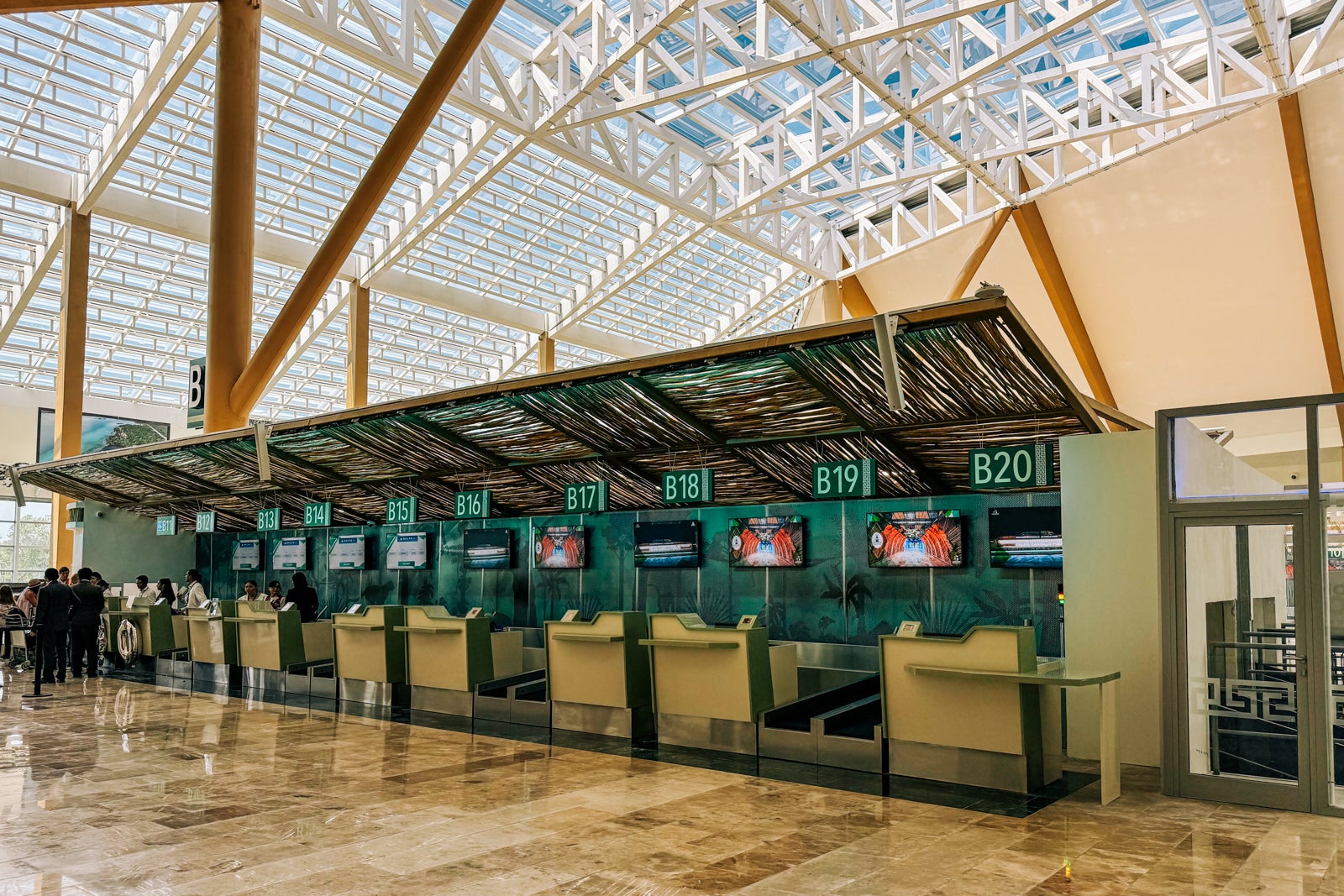[circuit type=review circuit_id=”9215″]
Editor’s note: Marriott provided a complimentary two-night stay so TPG could get an inside look at the resort and its amenities. The opinions expressed below are entirely those of the author and weren’t subject to review by Marriott or any external entity.
The Caribbean has no shortage of beautiful, sunny island destinations to escape the winter blues. The dual islands of Antigua & Barbuda were at the top of my list after hearing Antigua’s claim of boasting 365 beaches, one for every day of the year, and being the location of a previous season of Bravo’s ‘Below Deck.’
Following a cheap and cheerful stay at the Royalton Punta Cana Resort & Casino in the Dominican Republic a few years ago, I was keen to try the brand on one of the most picturesque islands imaginable. What better way to de-stress and make the most of a tropical paradise than by not having to lift a finger?
Here’s my review of the Royalton Antigua, An Autograph Collection All-Inclusive Resort — and what you should know before booking a stay there.
Related: The best Marriott all-inclusive resorts for a perfect vacation

What is Royalton Antigua?
With 294 all-suite rooms, the Royalton Antigua is a spacious all-inclusive resort on the Caribbean island of Antigua, near Five Islands Village, set on the picturesque Deep Bay. The property is located six miles from the island’s international airport, V. C. Bird International Airport (ANU), about a 20 minute drive, depending on traffic.
Since opening in 2019, guests can earn and redeem Marriott Bonvoy points here as part of the Autograph Collection.
Related: Luxury living in London with Marriott’s first Autograph Collection Residences

The property has an unusual layout on a long, thin block of land due to limited space in front of high elevation, meaning each building and amenity is in roughly a straight line, rather than being built around a central pool or social space.

The benefit of this is that as you cannot see the whole property from any vantage point, everyone is spread out, there are no bottlenecks and it doesn’t feel very big and never felt crowded despite the staff advising me of a 97% occupancy rate during my stay.
How to book Royalton Antigua
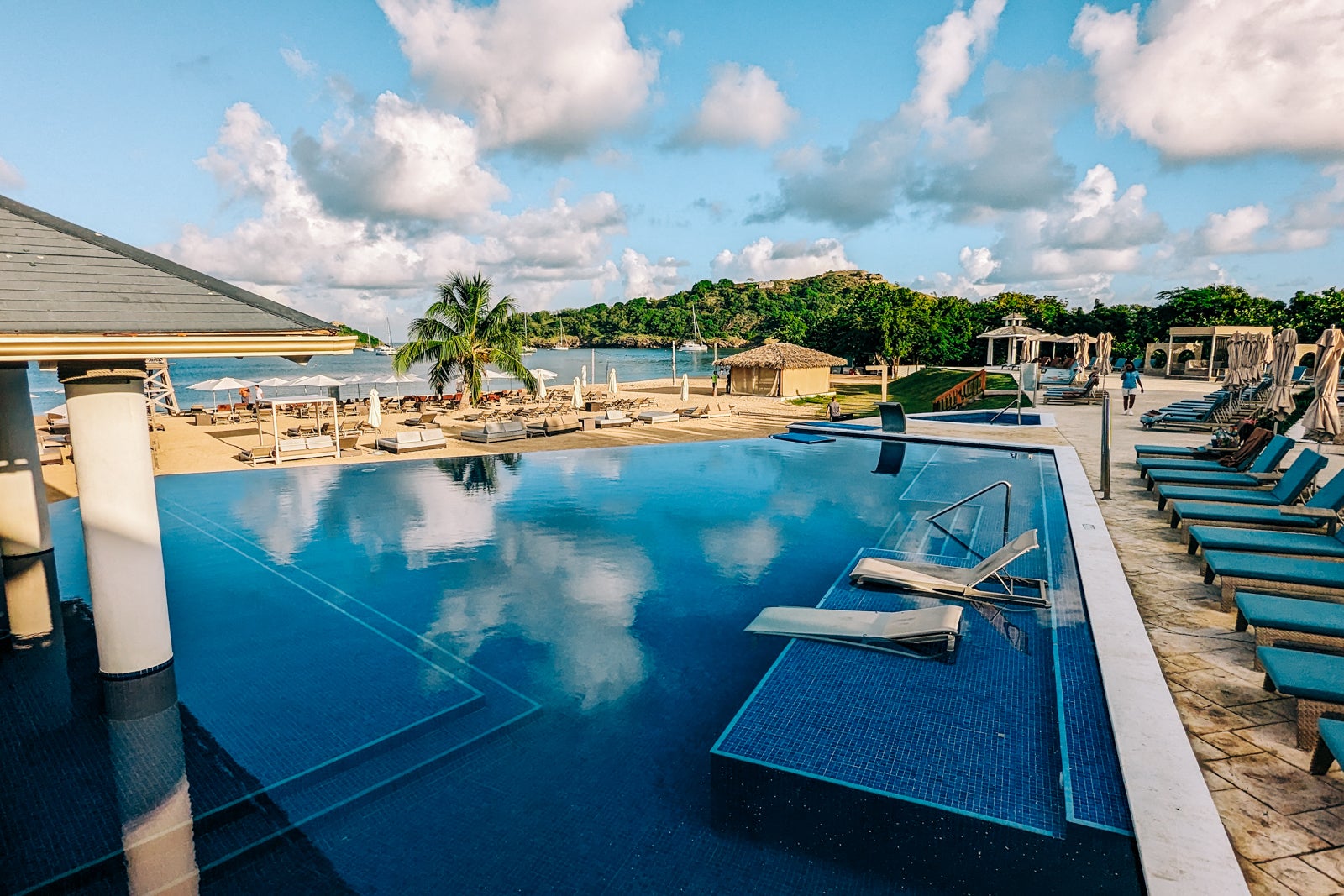
Antigua is not a budget destination (you’ll want to consider Mexico or the Dominican Republic if you want to save money in this region), and accommodation prices reflect that. Staying in an all-inclusive property is a great way to ensure you know upfront how much your vacation will cost, as food and drink prices can quickly add up outside of the property.
All-inclusive rates with accommodation, all meals, activities and most drinks (except specialty wine and Champagne) for two guests sharing a base-level mountain view suite start from $373 per night in the low season (where heavy rain is not uncommon), through to $742 per night during the peak seasons, like many dates from December to April. The property is open year-round.
Diamond Club VIP access can be added for around $150 per room per night, depending on the date.
Related: A review of the all-inclusive Royalton Blue Waters in Jamaica
Bonvoy members can redeem 70,000 points per night on off-peak dates and up to 115,000 points per night on peak dates, based on double occupancy.
Here are the best cards for booking Marriott Bonvoy properties, as well as redeeming your points for free nights:
- Marriott Bonvoy Brilliant® American Express® Card: Earn 185,000 points after you use your new card to make $6,000 in purchases within the first six months of card membership. Offer ends May 1. Annual fee: $650 (see rates and fees)
- Marriott Bonvoy Bevy™ American Express® Card: Earn 155,000 Marriott Bonvoy bonus points after using your card to spend $5,000 on purchases in the first six months of card membership. Offer ends May 1. Annual fee: $250 (see rates and fees)
- Marriott Bonvoy Boundless® Credit Card: Earn three free night awards (each night valued up to 50,000 points) after you spend $3,000 on purchases in your first three months from your account opening. Certain hotels have resort fees. Annual fee: $95
- Marriott Bonvoy Business® American Express® Card: Earn three free night awards after you use your new card to make $6,000 in eligible purchases within the first six months of card membership. Redemption level up to 50,000 Marriott Bonvoy points for each bonus free night award, at hotels participating in Marriott Bonvoy. Certain hotels have resort fees. Annual fee: $125 (see rates and fees)
- Marriott Bonvoy Bold® Credit Card: Earn 30,000 Marriott Bonvoy bonus points after using your card to spend $1,000 on purchases in the first three months from account opening. Annual fee: $0
- Marriott Bonvoy Bountiful Credit Card: Earn 85,000 Marriott Bonvoy points after you spend $4,000 in purchases in the first three months from account opening. Annual fee: $250
The information for the Marriott Bonvoy Bountiful card has been collected independently by The Points Guy. The card details on this page have not been reviewed or provided by the card issuer.
Rooms are modern, practical and stylish
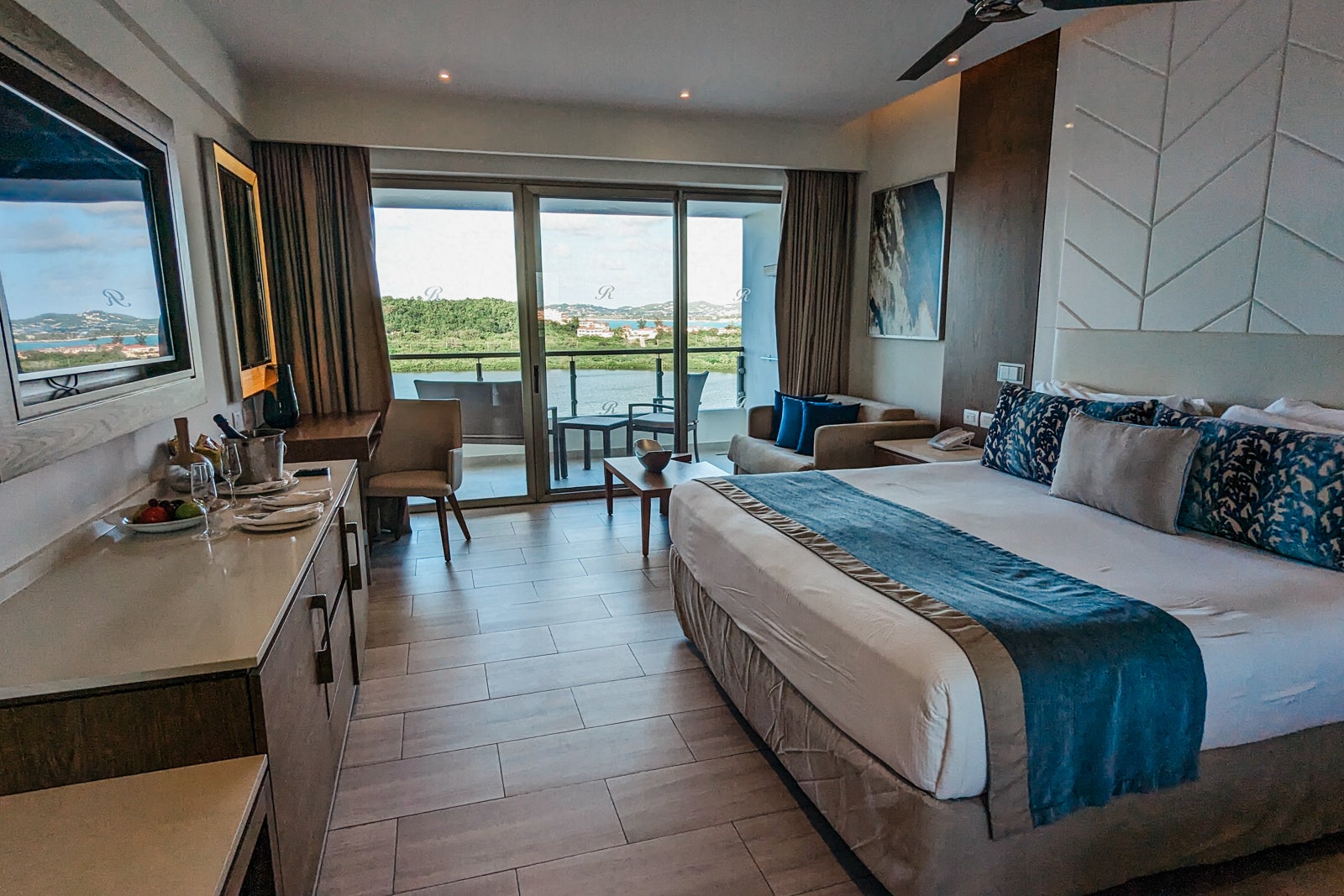
I was assigned a spacious 452 square foot lagoon view suite on the top floor for my two-night stay, and it had everything I needed, including a comfortable king-size bed, desk with chair, small sofa and large flat-screen television. Slippers and fluffy bathrobes in the closet added a luxurious touch.


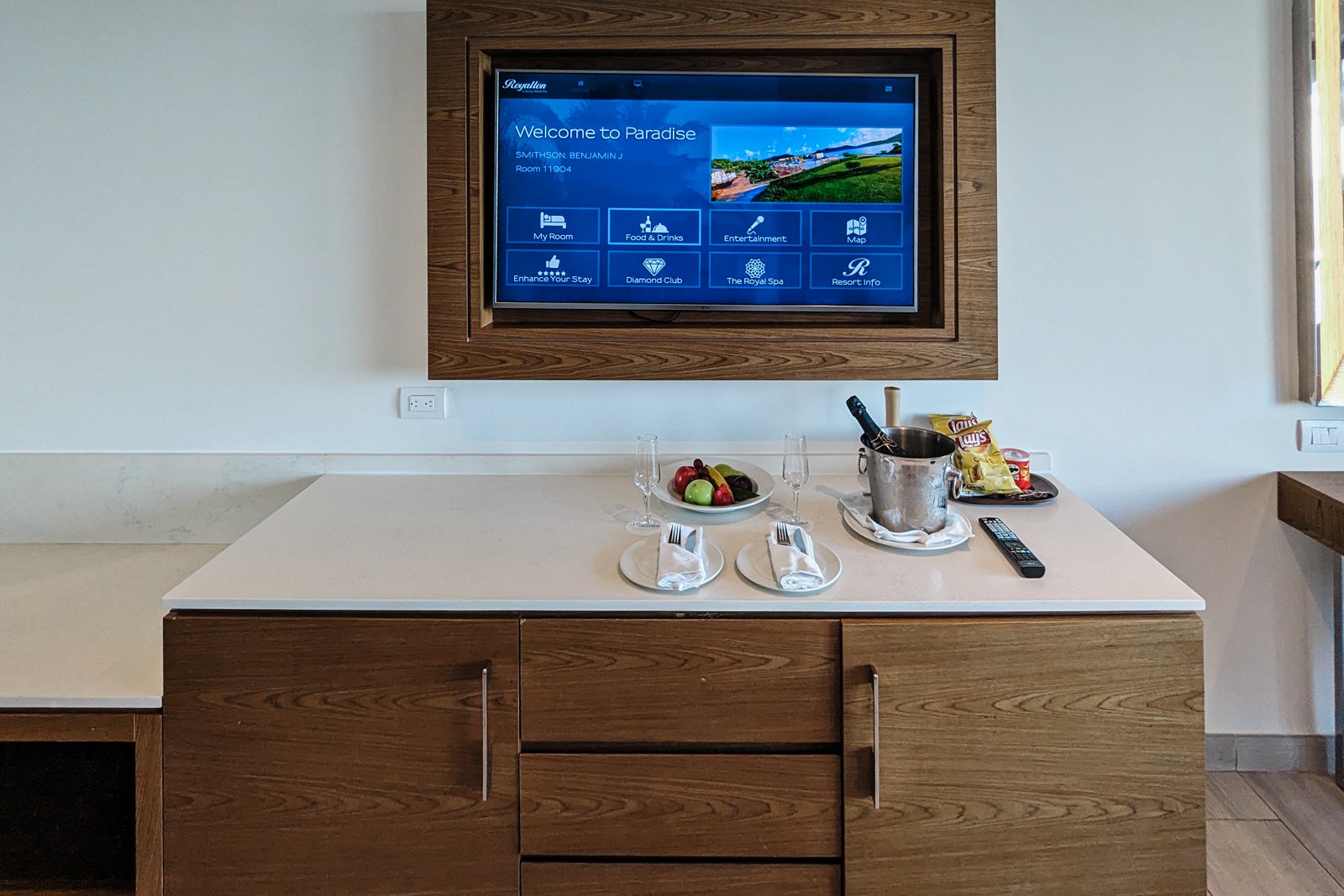

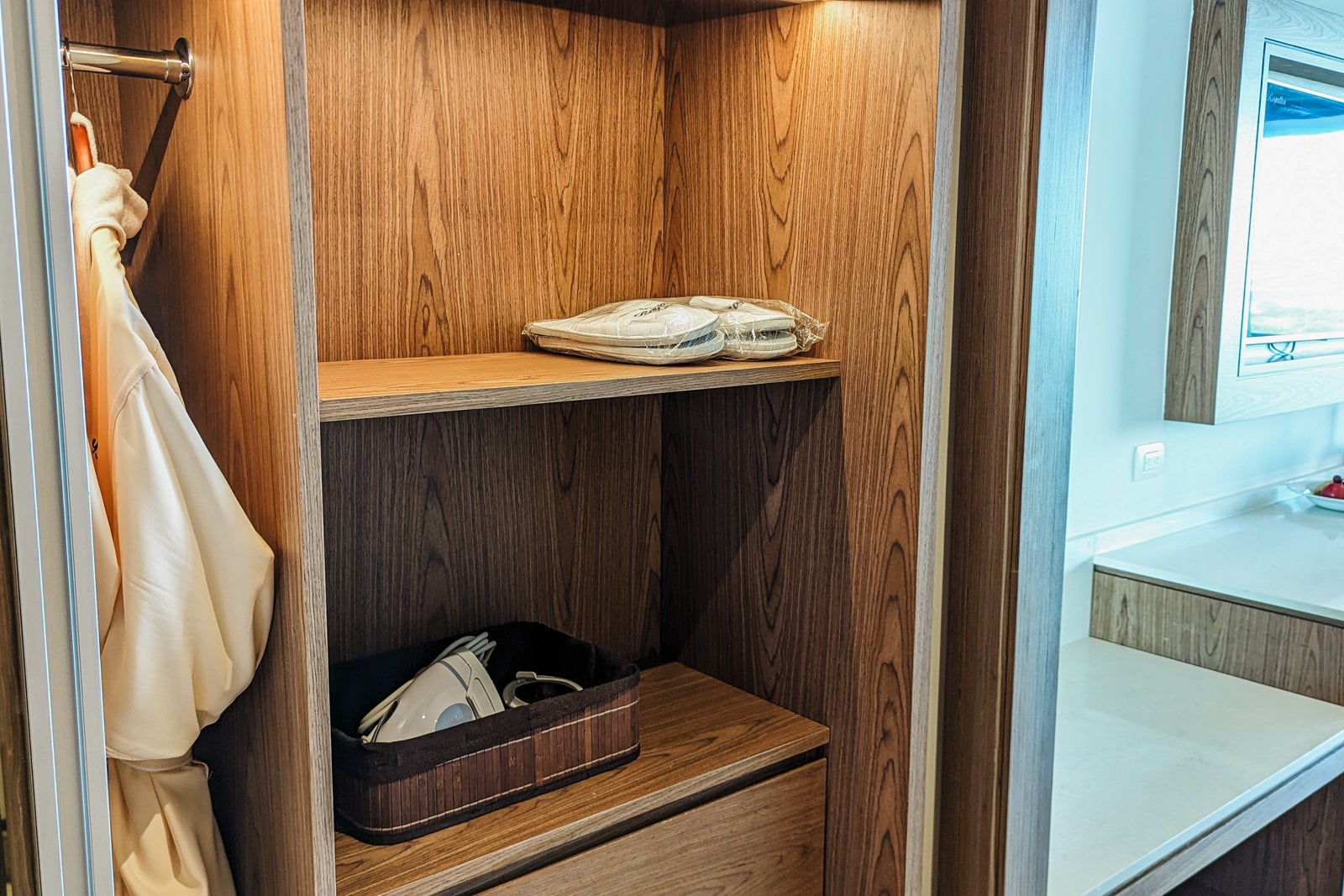
There were plenty of outlets to charge devices and everything just worked.
The bathroom featured a double vanity, rain head shower with excellent water pressure and temperature, and was stocked with Royalton-branded toiletries.
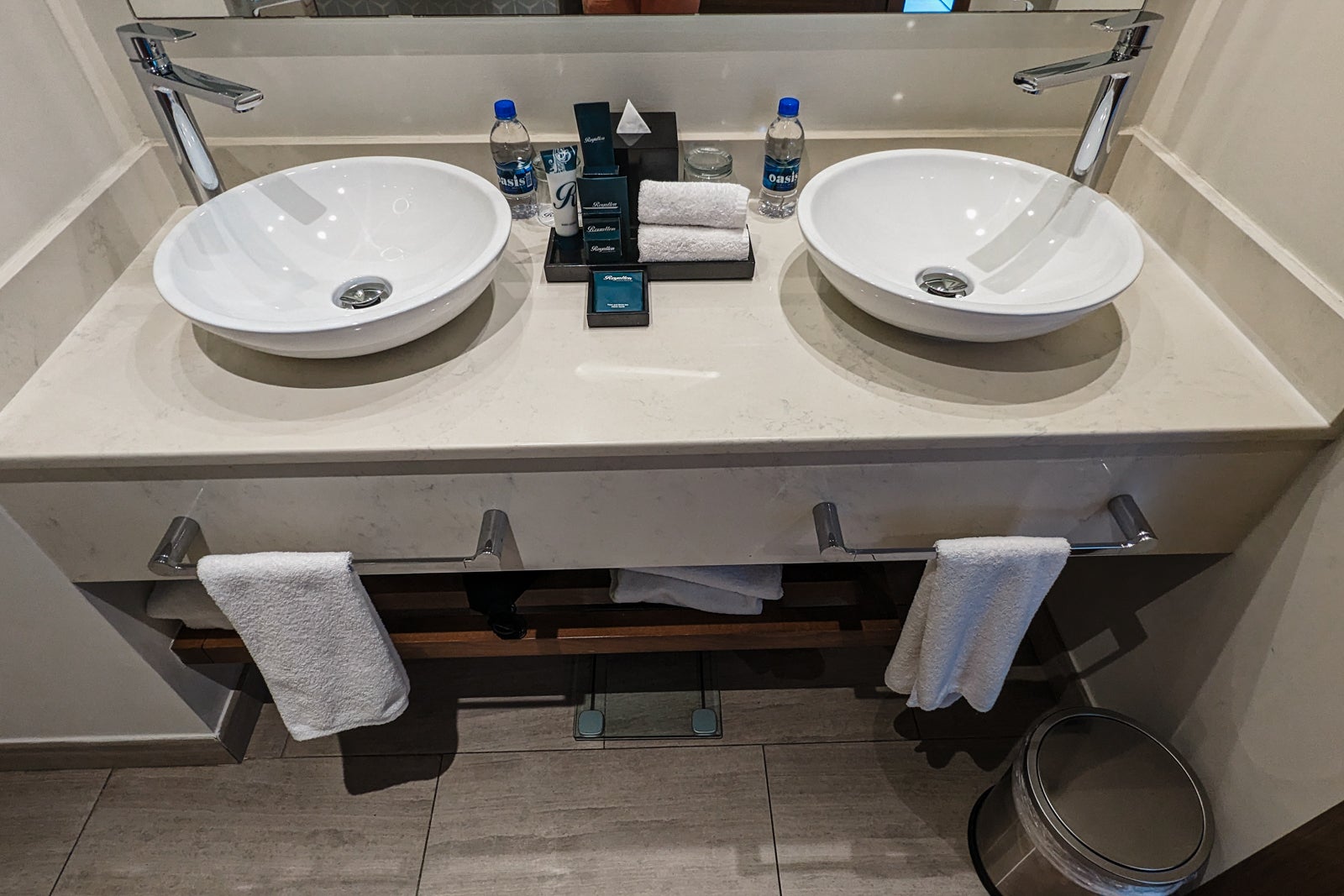


A small balcony offered spectacular views, particularly during sunrise and sunset.


The design style was neutral and wasn’t likely to win any cutting-edge design awards, but it provided a few pleasant pops of colors and nods to the local environment. Being an all-inclusive property, the minibar included local beer, soft drinks, water, chips, chocolate and a Diamond Club welcome gift of a bottle of sparkling wine and fresh fruit.

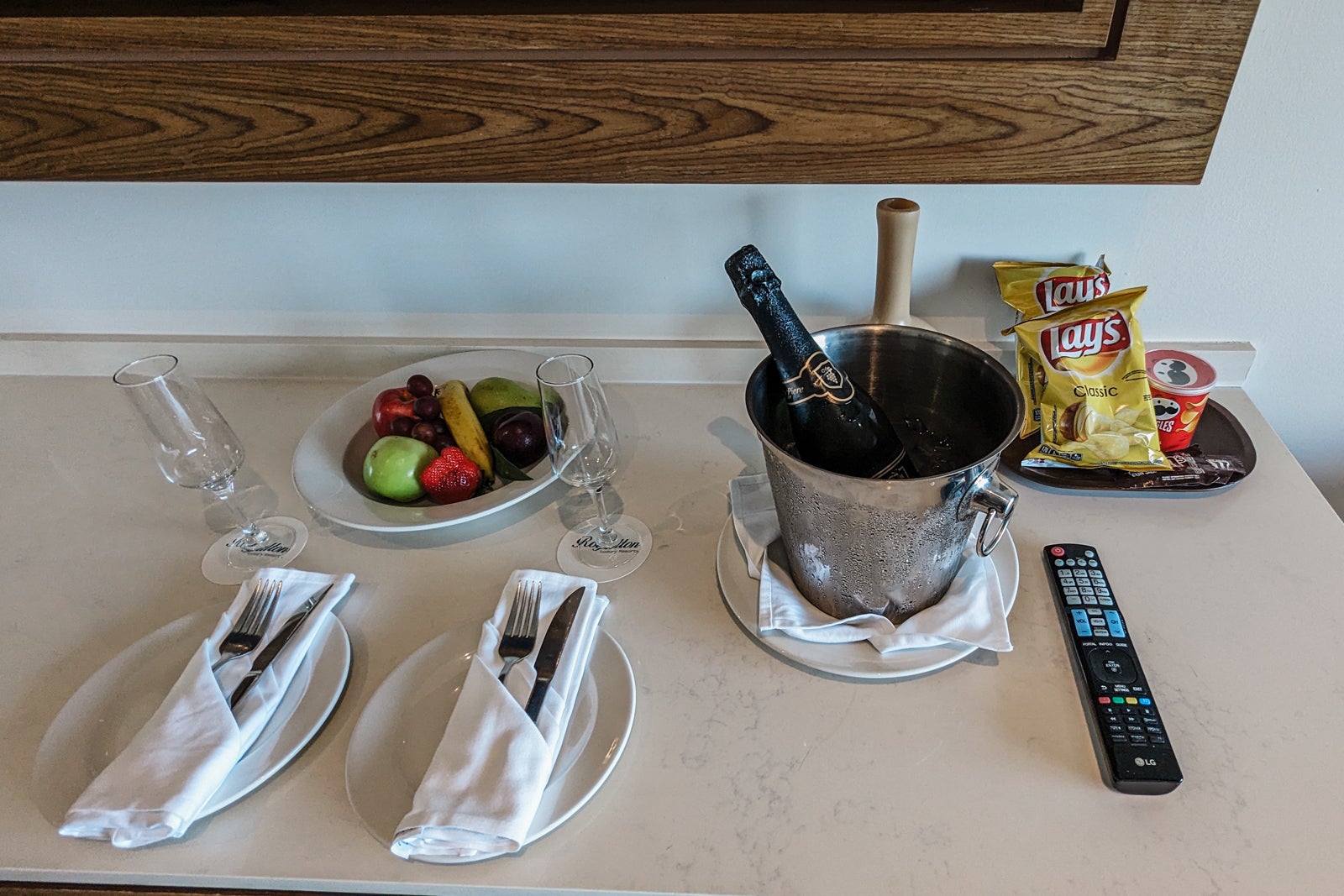
Related: 7 hotels with awesome (and free) minibars
Diamond Club comes packed with benefits

Diamond Club members receive plenty of additional benefits, the most notable being:
- Preferential room locations
- Personalized butler service available via instant messaging and beach butler services from sunrise to sunset
- Priority reservations at specialty restaurants
- Personalized check-in and checkout at the Diamond Club Lounge, stocked with snacks, appetizers, and sweet treats
- A curated selection of top-tier spirits
- The option to have breakfast overlooking the water at Grazie Trattoria
- Nightly turndown service
- One hour of therapeutic hydrotherapy access

Rather than check in at the main reception area, I was taken immediately by golf buggy to the Diamond Club Lounge, which is much closer to the guestrooms for check-in. This space has additional snacks available all day for Diamond Club guests and more premium spirits than at the regular bars, including Don Julio tequila, Grey Goose vodka, Hendricks gin and Hennessy cognac.


The butler service during my stay was terrific, with a morning and evening butler checking in with me via WhatsApp several times per day to see if there was anything they could do to assist, and the beach butler service meant I never needed to lift a finger as I worked on my tan.

With the specialty restaurants requiring reservations (and preference given to Diamond Club guests), having the Diamond Club butlers arrange reservations for each meal was a great perk.
You don’t need to travel to the Maldives for an overwater bungalow

Royalton’s best accommodations are the six Chairman’s Overwater Bungalows, a unique feature in the Caribbean and the first of its kind in Antigua.
A staggering 1,442 square feet each, these bungalows don’t come cheap, starting from $2,600 per night in low season.

They were booked solid during my peak time stay, but I got to have a quick peek inside one between a checkout and check-in and was wowed by what I saw.

The spacious bedroom led to a huge bathroom with a hot tub featuring dreamy ocean views.

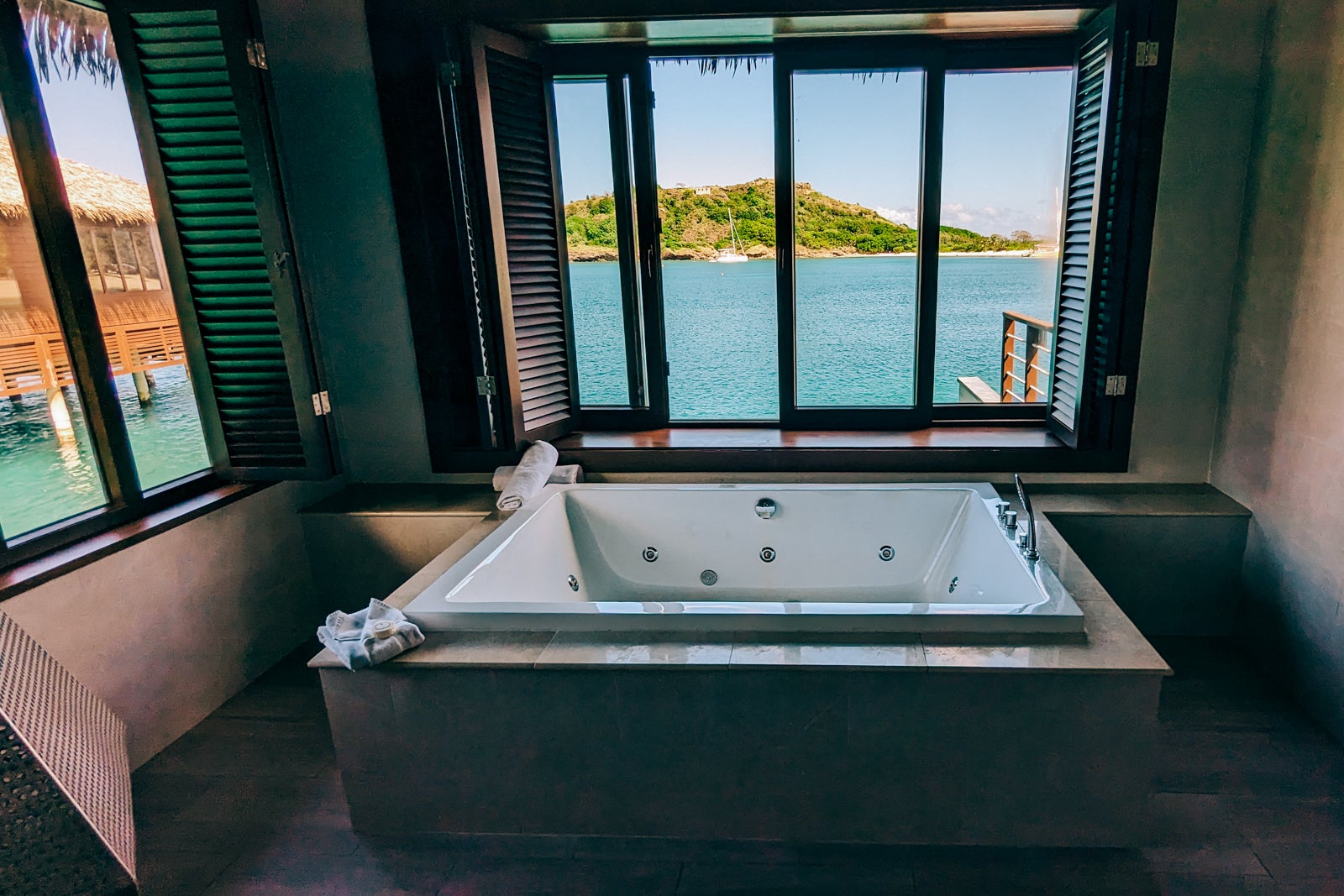
Underneath the living room coffee table was a glass floor to spot any local sea creatures coming to say hello.

My favorite part of the overwater bungalows was the private deck with a plunge pool, sun loungers and a hammock to take in the Caribbean sunshine.




If you fancy the bucket list experience of a luxury overwater bungalow but don’t want to travel to the Maldives or Bora Bora, you can experience this on the island of Antigua.
Related: Which is better: The Maldives or Bora Bora?
Plenty of dining options with varying food

The Royalton Antigua has a range of dining options from a sunrise coffee to late night snacks and cocktails. Here is what I was able to try out during my two-night stay:
Gourmet Marche buffet

The hotel’s main buffet restaurant is open for breakfast, lunch and dinner and does not require reservations. There were plenty of seating options, and sitting outside was especially lovely to enjoy the warm, tropical air.
I sampled the food here for breakfast, and there were many options with plenty of American favorites like bacon, scrambled eggs, pancakes, donuts, bagels and egg stations where the friendly chefs cooked omelets to order. Everything was tasty, though not particularly high-end — given the tropical location, I hoped to see more exotic fruit options than just watermelon, pineapple and oranges.




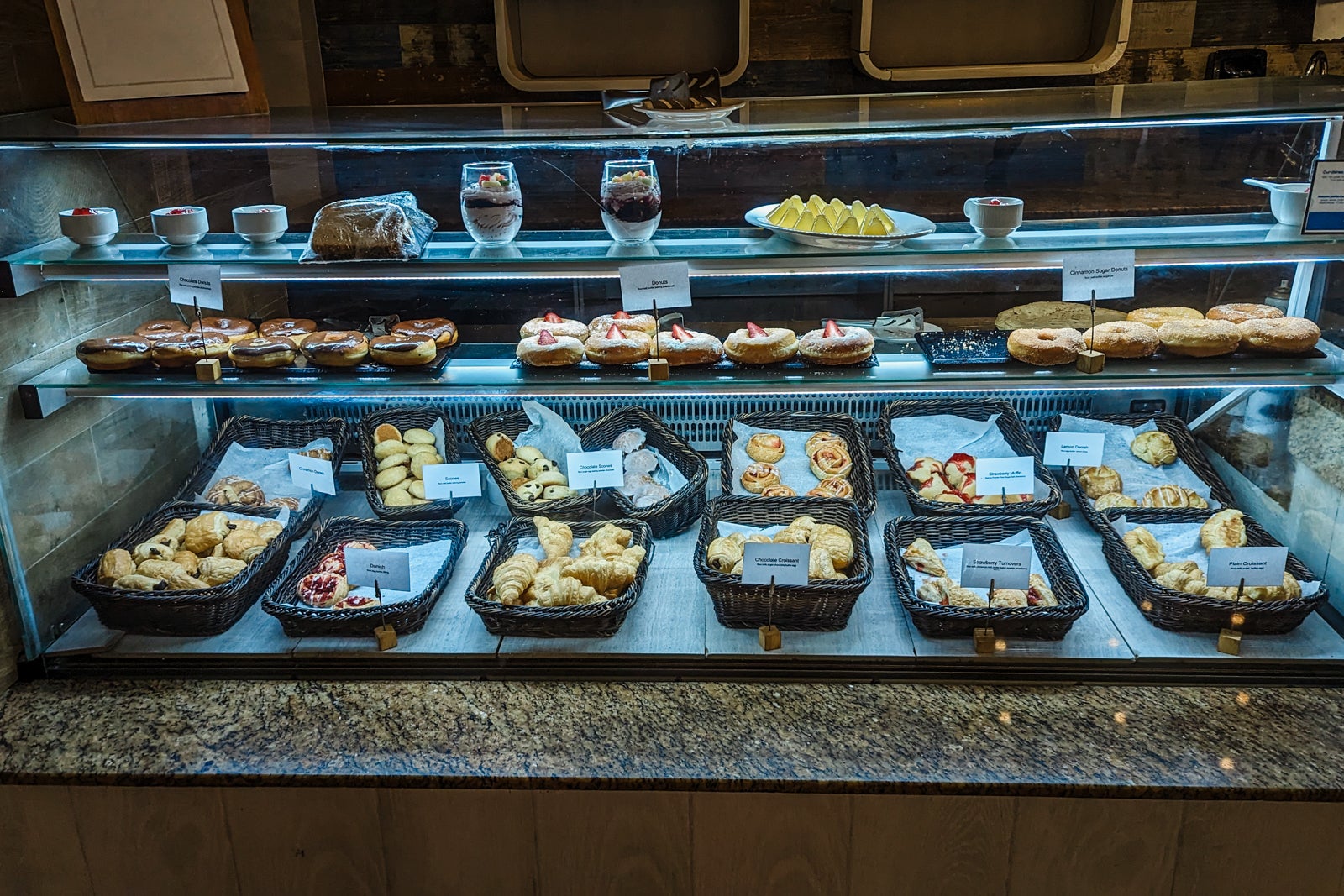


Hunter steak house

Royalton Antigua featured the same steak house as the Royalton I visited in the Dominican Republic, right down to the same decor and menu. Reservations are required — it was easy to score a booking through my Diamond Club concierge, and those without Diamond Club could secure a table after just a short wait.

While I enjoyed my mixed grill in the Punta Cana location, my rib eye steak in Antigua looked excellent and was served with a smile but was unfortunately very overcooked and tough despite ordering it medium rare.
Grazie Trattoria

Another familiar sight from my Punta Cana stay was the Italian restaurant Grazie Trattoria. I wasn’t wowed by dinner there previously, so decided to take advantage of the Diamond Club perk of eating breakfast in this beautiful setting overlooking the water and the bungalows.
It was a lovely start to the day with excellent staff on hand offering espresso coffee, fresh juices, smoothies and eggs how you like them.



I recommend breakfast here over the main buffet if you have Diamond Club access.
Caribbean restaurant and grill

Hidden away behind Grazie is a Carribean restaurant I didn’t even realize was there until my butler pointed it out. This was the best meal of my stay, with a delicious acapulco-style ceviche followed by a hearty local curried lamb stew, though the coconut shrimp appetizer was a miss, tasting like the shrimp had been cooked from frozen.


Score Brewhouse

I was excited to see a beer hall advertised as one of the hospitality venues offering a range of craft beers. First impressions were good, with half a dozen beer taps installed on the bar, and plenty of beer-themed artwork promoting different varieties of beer from across the world.
Seeking to quench my thirst in the tropical heat, I excitedly asked what beers the bartender had to offer. Imagine my surprise when he sheepishly informed me only one beer, Carib, was available, this being the same beer available at the pool bar, in the restaurants and stocked in the minibar.

While Carib was an acceptable lager, and I recognize craft beers can be difficult to source on a tropical island (though I did find a genuine craft brewery on the island), this seemed like a huge missed opportunity for a premium all-inclusive resort to only stock one type of beer in its purpose-built brewhouse.
The pool and beach celebrate the best of antigua

The resort is located on Deep Bay, and while Antigua boasts 365 beaches (one for every day of the year), Deep Bay was among the best I saw on the island. The picture-perfect, white-crystal sand and warm, turquoise-blue waters were heavenly and surely why people travel to this region.

All beaches in Antigua are public, and a few times a day, a boat tour would pull into the bay to show some cruise ship daytrippers just how beautiful it was.
You know your resort is on an outstanding beach when its a tourist attraction for someone with only a few hours to see the island.

The pool setup at the back of the beach was substantial, with plenty of sun loungers available despite the high occupancy during my peak-time stay.

I appreciated the range of seating options, from right on the sand to next to the pool to the private cabanas that could be rented for an additional cost.



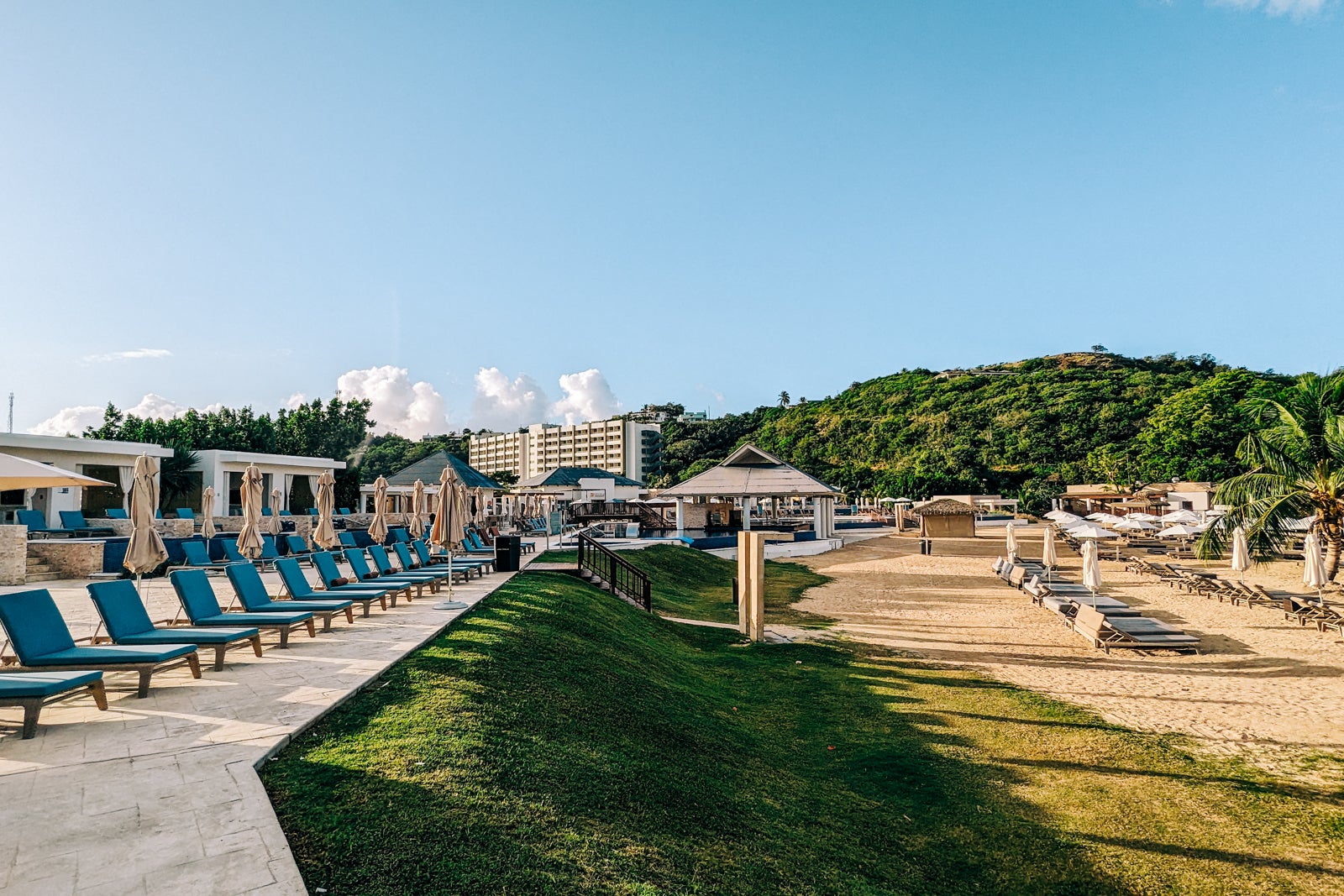

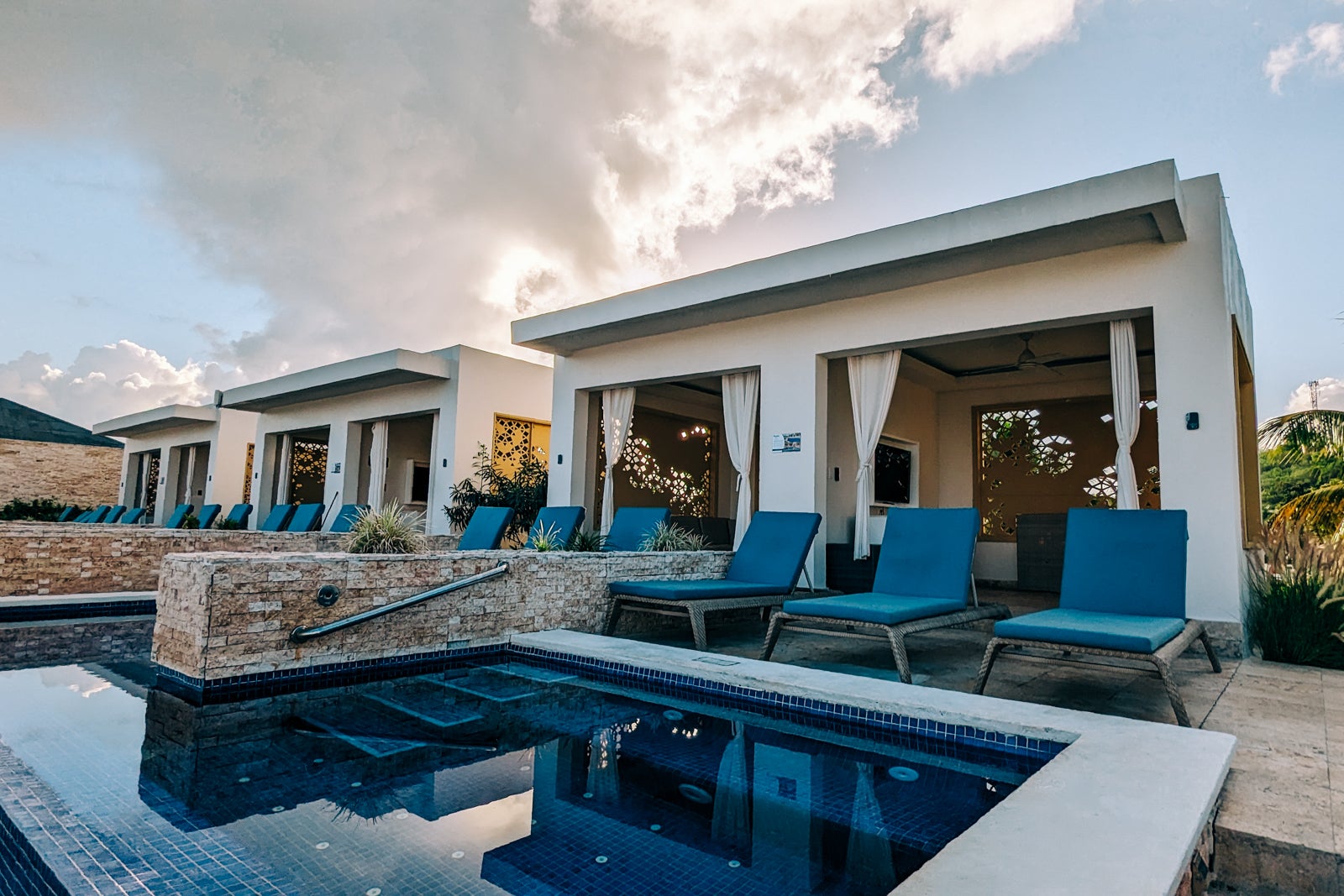
The swim-up bar mixed cocktails until sunset for the thirsty crowd, with Diamond Club guests offered sunlounger food and drink service. Don’t expect bespoke, artisan cocktails, but the frozen strawberry daiquiri hit the spot on a hot day.

The vibe got quite merry late afternoon, but I would not describe this as a party resort. While families are welcome here (and there is even a kids club), I would say 90% of the guests were in the 30-60-year age bracket.
Nightly entertainment is surprisingly good

I’ve witnessed plenty of nighttime entertainment at all-inclusive resorts, from low-budget celebrity impersonators to an impressive acrobatic show in the lobby at Zoetry Punta Cana.
On the first night of my stay was a “Carnival show” at 9 p.m. with a local dance troupe brought in for the occasion. This was a well-produced and fun celebration of Antiguan music, traditional dress and culture, complete with some obligatory audience participation.




While I didn’t don a headdress, it created a great atmosphere and was a fun way to learn more about the island’s history in an entertaining format.
Related: This is how you do a luxury all-inclusive: Zoetry Mallorca, bookable with Hyatt points
Service went above and beyond

This was the eighth Caribbean island I have visited and the best service I have experienced in the region. Everyone I interacted with had a broad smile and a welcoming demeanor and excelled at hospitality. There were plenty of gentle jokes about how my two-night stay at the property was far too short to enjoy the best of the Caribbean.
I appreciated how personalized the Diamond Club experience was, with my butler often coming to find me in the public areas like the pool and beach to check how I was doing, have a polite chat and see if there was anything they could do to improve my stay.
Though the food was not faultless, the service at each meal was. I also noted how proactive the staff would be — I never had to ask for anything, which was not my experience at other Caribbean destinations.
Accessibility

Royalton Antigua’s long, thin layout means you’ll get plenty of steps in moving from one end of the property to the other. For those with mobility issues, wide, flat paths linking every building and facility were never crowded and provided picturesque views across the beach and lagoon.
Elevators can transport guests between floors of guestrooms though with only two elevators for 300 rooms, there were some delays.
As always, we recommend calling to confirm accessible room types and accessibility features of any hotel or resort before booking and before arrival.
Checking out

I thoroughly enjoyed my time at Royalton Antigua and found it a significantly more luxurious experience than the Royalton Punta Cana. The beautiful property and the unique layout cleverly made a 300-room, at-capacity resort never feel busy.
Deep Bay is one of the most beautiful beaches on one of the most beautiful islands I’ve visited. Royalton should be commended for securing this location, which was undoubtedly a tricky design and built due to the shape of the available land.
The terrific staff seemed to genuinely enjoy their jobs, balancing warmth with initiative, and I instantly felt at home. While Diamond Club is an upcharge to what can already be a pricey destination, especially in peak season, the perks are undeniable, and having a Whatsapp service day and night to organize anything for you was really valuable.
Food could be improved with more investment in quality produce and chef training — it was the only real grumble I heard from other guests, but I would recommend Royalton Antigua as one of the better all-inclusive resorts I have stayed in.
Related reading:
- The award travelers guide to Marriott Bonvoy
- The best Marriott credit cards
- What is Marriott Bonvoy elite status worth?
- The best credit cards to reach elite status
- Which credit cards offer the most lucrative rewards for hotel stays?
- The best hotel rewards programs in the world
- Best hotel credit cards



